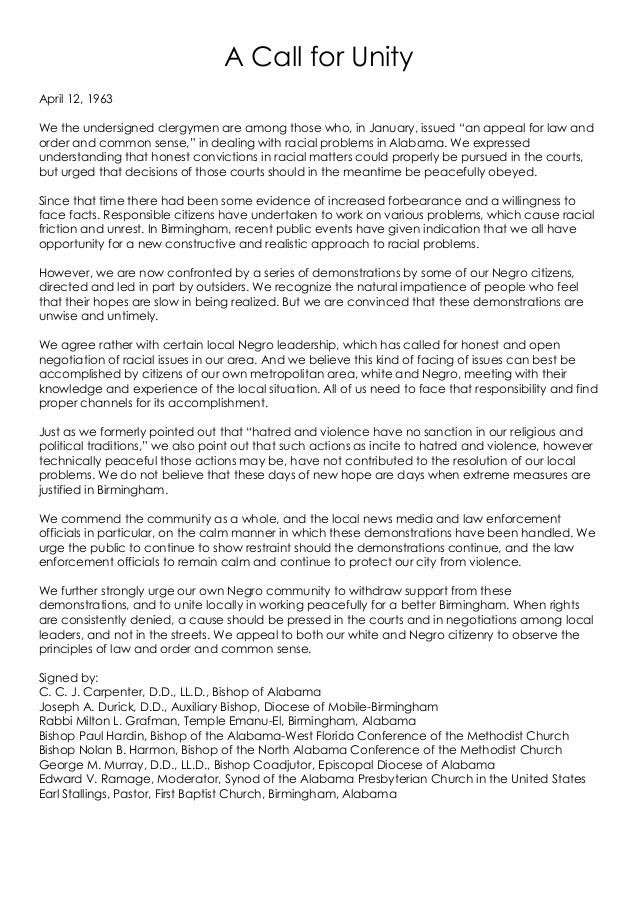 | ||
Similar Executive Order 10479, Bearing the Cross, Executive Order 11063 | ||
Mlk s letter from birmingham jail a call for unity 1963
"A Call for Unity" was an open letter published in Birmingham, Alabama, on April 12, 1963, by eight local white clergymen in response to civil rights demonstrations taking place in the area at the time. In the letter, they took issue with events "directed and led in part by outsiders," urging activists to engage in local negotiations and use the courts if rights were being denied rather than to protest.
Contents
The term "outsider" was a thinly veiled reference to Martin Luther King, Jr., and King replied with his famous "Letter from Birmingham Jail", arguing that civil action was in fact necessary.
The authors of "A Call for Unity" had written "An Appeal for Law and Order and Common Sense" in January of the same year.
A call for unity
Signatories
References
A Call for Unity Wikipedia(Text) CC BY-SA
